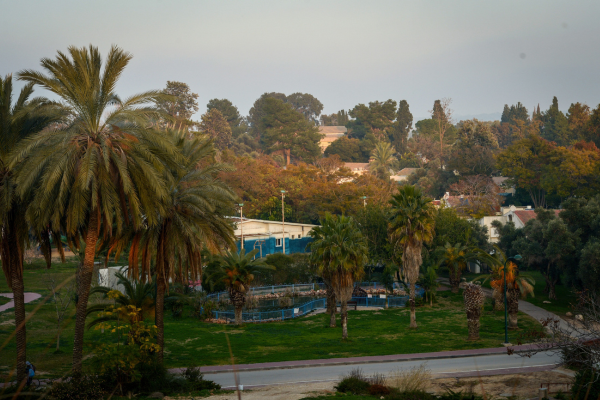Kibbutz Yad Mordechai has been under continuing rocket fire since it held off terrorist infiltrators on Oct. 7.
By Etgar Lefkovits, JNS
A Holocaust museum in a kibbutz near the Gaza Strip has been damaged by a Hamas rocket.
The From Holocaust to Revival Museum, which is located less than two miles from the Hamas-run coastal territory, was drenched with water on Tuesday, floor tiles stripped and stones and debris on the floor under a gaping hole in the ceiling where the projectile hit.
“It is heartbreaking to see the damage,” Yael Shtauber, CEO of the museum, told reporters, including JNS, during a tour of the site on Tuesday. “The museum symbolizes the Jewish people.”
It was the first time the museum was opened since the war began and the CEO’s first visit to inspect the damage.
The rocket burst a water pipe, inundating two of the museum’s most well-known exhibits, a model of the Warsaw Ghetto and a recreation of the ghetto’s World War II bunker known as Mila 18, the headquarters of the Jewish Combat Organization (ŻOB) where the fight against the Nazis was led from.
The kibbutz, which is currently vacated and a closed military zone, repelled a Hamas infiltration attempt during the Oct. 7 attack. It has been under continuing rocket fire ever since. During Tuesday’s visit by journalists, the rockets set nearby fields ablaze.
Kibbutz security discovered the damage at the museum late Monday night when they saw water pouring out of the site.
“Like in the Holocaust, the idea was to kill the Jews,” said Jeremy Weiss, a museum official. “It is very symbolic that the missile that hit the museum damaged the bunker [symbolizing] the Jewish resistance to the Nazis.”
Other exhibits, including an international photo display of Holocaust survivors around the world known as the Lonka Project, were not damaged.
The museum, which is steeped in the history of the 1943 Warsaw Ghetto Uprising, overlooks trenches from the 1948 War of Independence that are now being used anew, as well as a statue of Mordechai Anielewicz, commander of the Jewish Combat Organization, the largest Jewish resistance movement during the Second World War.
Founded in 1968 by Holocaust survivors from Poland, the museum regularly hosts 40,000 visitors a year.
“Thankfully it is only broken things and not people,” Shtauber said. “We will rebuild and tell this story too.”
